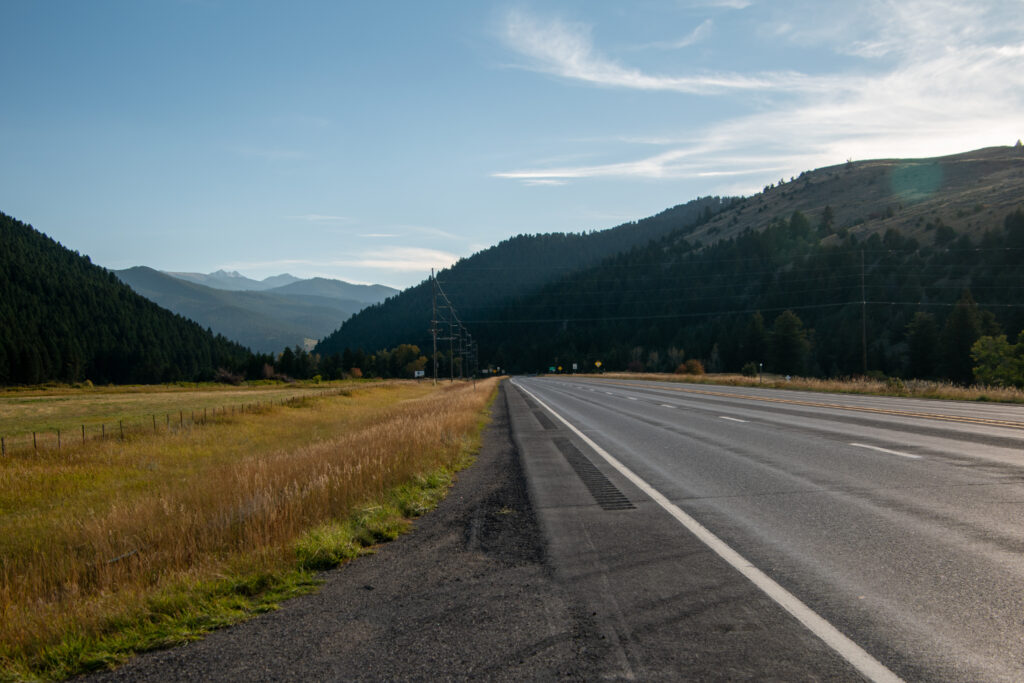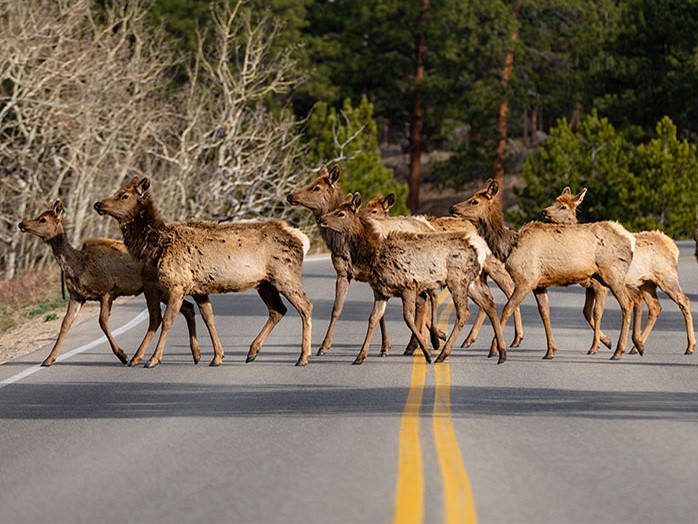MDT is seeking federal grant to help prevent wildlife-vehicle collisions on US Highway 191
Center for Large Landscape Conservation
Montana Department of Transportation
NEWS RELEASE
October 9, 2024

Bozeman, MT ─ In early September, the Montana Department of Transportation (MDT) applied to the federal Wildlife Crossings Pilot Program (WCPP) for a discretionary grant to help fund a $26-million project that includes a new wildlife overpass, upgrades to an existing underpass, and a bridge retrofit to allow wildlife to pass safely over and beneath US Highway 191 in Southwest Montana. Through the Montana Wildlife and Transportation Partnership (MWTP), MDT teamed with the Bozeman-based, nonprofit Center for Large Landscape Conservation (CLLC) to move the grant application forward.
US-191 parallels the Gallatin River, cutting through critical habitat for resident, wide-ranging, and migratory species in the Greater Yellowstone Ecosystem. Yet tourism and population growth have led to an increase in wildlife-vehicle conflicts along this route. Within the project area, 24% of all crashes are collisions with wildlife—more than double the statewide average of 10%.
In 2023, the US-191/MT-64 Wildlife & Transportation Assessment published by CLLC and Montana State University’s Western Transportation Institute identified 11 priority sites suitable for crossing structures to reduce collisions and reconnect habitat along the 80-mile stretch of highway between Four Corners and West Yellowstone. Since then, MDT and CLLC have worked closely with community partners to address the top priority site located from just south of Gallatin Gateway to the mouth of Gallatin Canyon. Community support enabled CLLC to commission an engineering feasibility study to assess potential structures and associated fencing that would allow safe passage for wildlife over or below US-191.
“The aim of the assessment was to provide the data and recommend science-based solutions to help decision-makers address wildlife-vehicle collisions on 191,” explains CLLC Road Ecologist Liz Fairbank, the study’s lead author. “Due to overwhelming community interest, we took on fundraising and more to ensure a grant application could be submitted. The generosity of companies, nonprofits, and landowners who care about driver safety as well as safe passage for wildlife has been tremendous,” says Fairbank.
One of the requirements of the highly competitive WCPP, offered by the Federal Highway Administration, is a non-federal match, with $3.5 million required for the $22.8 million grant request. CLLC has secured pledges from businesses, nonprofit organizations, and private donors, and is continuing to fundraise to achieve this goal. Lone Mountain Land Company and the Yellowstone Club Community Foundation have provided the majority of matching funds. The grant application included 23 letters that demonstrate project support from Montana’s congressional representatives, federal, state, and local agencies, sportsmen’s organizations, nonprofits, and landowners.
“It’s to the credit of CLLC and the Montana Wildlife and Transportation Partnership, that MDT is able to pursue this grant,” said MDT Chief Operating Officer Dwane Kailey. “CLLC conducted a sound assessment, worked with us to develop a viable project solution, and raised the matching funds if we are awarded the grant.”
The MWTP, launched in 2020, facilitates collaboration between MDT, Montana Fish, Wildlife & Parks (FWP), and Montanans for Safe Wildlife Passage. MWTP is working with other entities through the program to facilitate wildlife accommodation projects like this in other parts of the state
“Wildlife crossings are critical for maintaining the health of our ecosystems and ensuring the safety of both wildlife and motorists,” says Warren Hansen, FWP Region 3 Wildlife Manager. “By providing safe passage across busy roadways, like US 191 south of Gallatin Gateway, we not only reduce vehicle collisions but also promote habitat connectivity, which is essential for sustaining Montana’s rich biodiversity.”
Wildlife Crossings Pilot Program awards are expected to be announced in early 2025. Updates on this effort will be posted on CLLC’s website at largelandscapes.org/191.
About the Center for Large Landscape Conservation
The Center for Large Landscape Conservation advances ecological connectivity for climate resilience worldwide through science, policy, practice, and collaboration. largelandscapes.org
About the Montana Department of Transportation
At MDT, our mission is to plan, build, operate, and maintain a safe and resilient transportation system to move Montana forward. For more information about MDT and the work we do on behalf of Montana’s traveling public, visit https://www.mdt.mt.gov/
CONTACTS:
Christine Weinheimer, Communications Manager, Center for Large Landscape Conservation
christine@largelandscapes.org
406-586-8082
Charity Burns, Public Information Officer, Montana Department of Transportation
chburns@mt.gov
406-444-3821
Top photo: Elk herd crossing road – Adobe Stock



